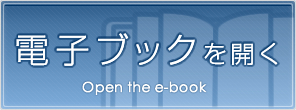「人道研究ジャーナル」Vol.2 page 68/276
このページは 「人道研究ジャーナル」Vol.2 の電子ブックに掲載されている68ページの概要です。
秒後に電子ブックの対象ページへ移動します。
「電子ブックを開く」をクリックすると今すぐ対象ページへ移動します。
概要:
「人道研究ジャーナル」Vol.2
The Journal of Humanitarian Studies Vol. 2, 2013establishing a hospital with relief workers institution to Hakuaisha. As a result, Hakuaisha Hospital was foundedon 17 November 1886. Because of the ratification of the Geneva Convention by the Japanese government on 5June 1886, the Philanthropic Society changed its name to the Japanese Red Cross Society (JRCS) the followingMay in 1887. The first regulations of the JRCS stated the development of wartime relief activities and nursingeducation in Japan. (3)‘The Regulations of the Japanese Red Cross Society Nursing Education’was introduced on 14 June 1889. Itdemands that if nurses are called up for wartime relief duties within certain periods after graduation by theheadquarters, they are obligated to follow orders. Aims of wartime relief activities were to save victims of armedconflicts, which inevitably occurred in modern times. It is obvious that regulations of nursing education weregreatly influenced by the Geneva Convention. In Japan, nursing education for female workers was started atthe JRCS Hospital in April 1890. Nursing students took a year and a half of a taught course and did a two yearinternship. The hospital produced nursing graduates for the first time in October 1891. Those graduates joinedrelief activities at the Great Nobi Earthquake, which hit Aichi and Gifu Prefectures in October 1891. The resolutionof the Second International Conference of the Red Cross stated relief activities for natural disasters by nationalsocieties. (4) At that moment, the Red Cross movement began to increase their interest in natural disaster reliefinternationally. The JRCS added a section about natural disaster relief activities based on their real experiences ofrelief activities at the Mount Bandai Eruption in Fukushima Prefecture in 1888 and the Great Nobi Earthquake aspreviously mentioned in their regulations in 1892.2. Initial Movement of Wartime Relief Activities by Female Relief WorkersAfter the outbreak of the First Sino-Japanese War on 1 August 1894, the JRCS dispatched the first relief party tothe Hiroshima Army Reserve Hospital under the order of the Minister of War. The party had one female directorand twenty female nurses. They became the first female workers to participate in wartime relief activities in Japan.Following their deployment, a number of female nurses were sent to the Army Reserve Hospitals in a wide rangeof areas in the country including Tokyo. They treated sick and wounded Japanese soldiers and Chinese POWs. Thetotal number of dispatched female nurses including directors, supervisors, chief nurses and nurses reached 649during the First Sino-Japanese War, (5) while 4 died in the line of duty from infectious diseases.During the Boxer Rebellion (1900), Japanese Red Cross nurses went aboard by medical ships called Hakuai Maruand Kousai Maru that had been launched by the JRCS the previous year. They cared for wounded patients during avoyage on the vessel. Because allied forces saw action in this Rebellion, there were a number of wounded soldiersfrom allied nations on the ship such as French. Their efforts became the first real international relief activities inthe history of the JRCS. In total, the JRCS dispatched 197 female relief nurses during the Boxer Rebellion. (6)After the outbreak of the Russo-Japanese War in February 1904 in the early 20 th century, the relief activitiesexpanded to a much larger scale. The total number of deployed female workers to the Army Reserve Hospitals andthe Naval Hospitals in Mainland China and to medical ships reached 2,874, (7) and 39 of them lost their lives duringtheir missions. Their operations also involved caring Russian POWs.The JRCS amended‘The Regulations of the Japanese Red Cross Society Nursing Education’in January 1909 andchanged the name to‘The Regulations of the Japanese Red Cross Society Relief Workers Education’. After thatthe JRCS called female relief workers‘Relief Nurses’.66人道研究ジャーナルVol. 2, 2013

